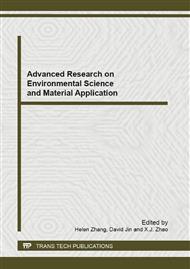p.199
p.204
p.208
p.214
p.218
p.222
p.226
p.230
p.234
Surface Treatment of Quartz Fiber in SiO2/SiO2f with Composite Properties of Materials
Abstract:
Two methods are adopted to remove wetting agents on surface of the quartz fiber, one is heat treatment, and the other is the combination of organic solvent and heat treatment. By comparing the changes of weight loss rate of quartz fiber before and after surface treatment, analyzing variation of morphology and composition of surface in SEM and XPS approaches, we conclude that the combination of organic solvent and heat treatment is superior to the pure thermal treatment in dealing with surface of quartz fiber. In heating process, different heating rates are used, the results show that: the lower the heating rate is, the greater the mechanical strength of the quartz fiber losses.
Info:
Periodical:
Pages:
218-221
Citation:
Online since:
November 2012
Keywords:
Price:
Сopyright:
© 2012 Trans Tech Publications Ltd. All Rights Reserved
Share:
Citation:


